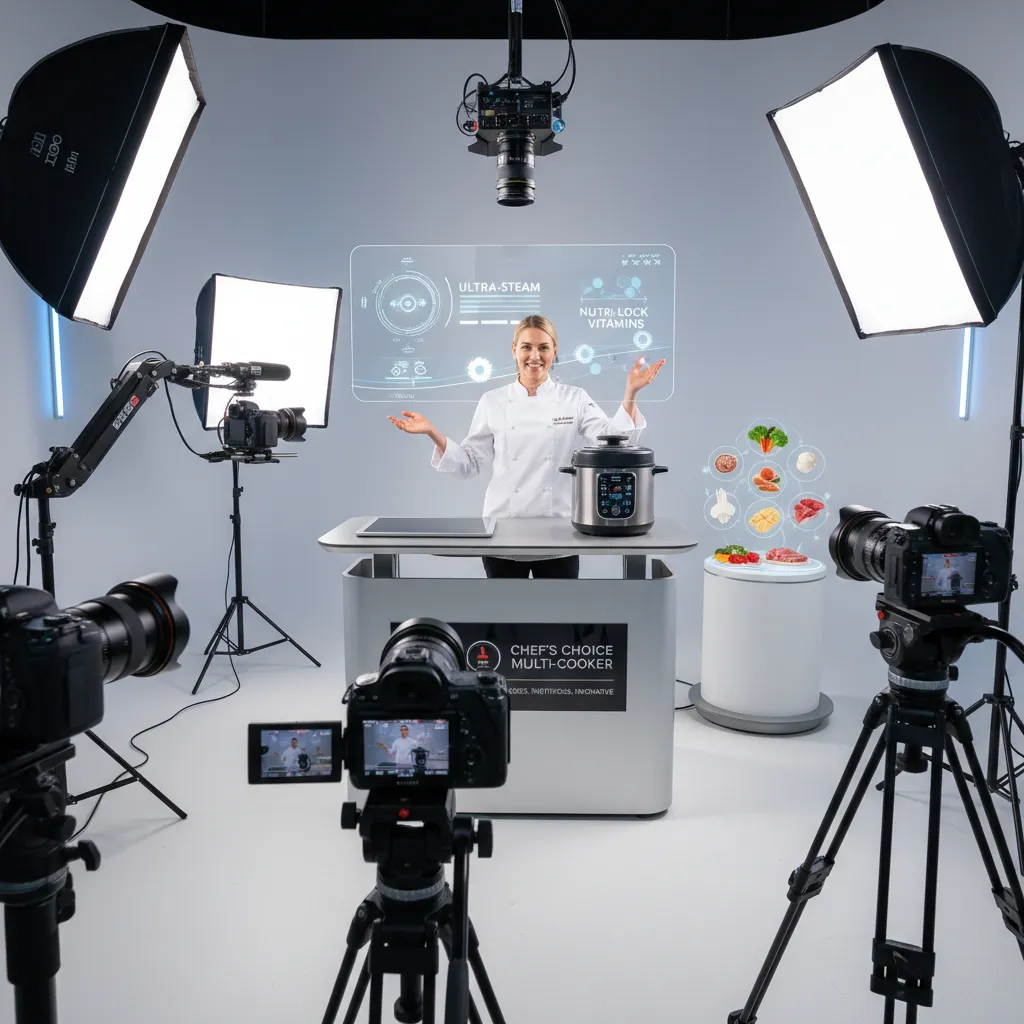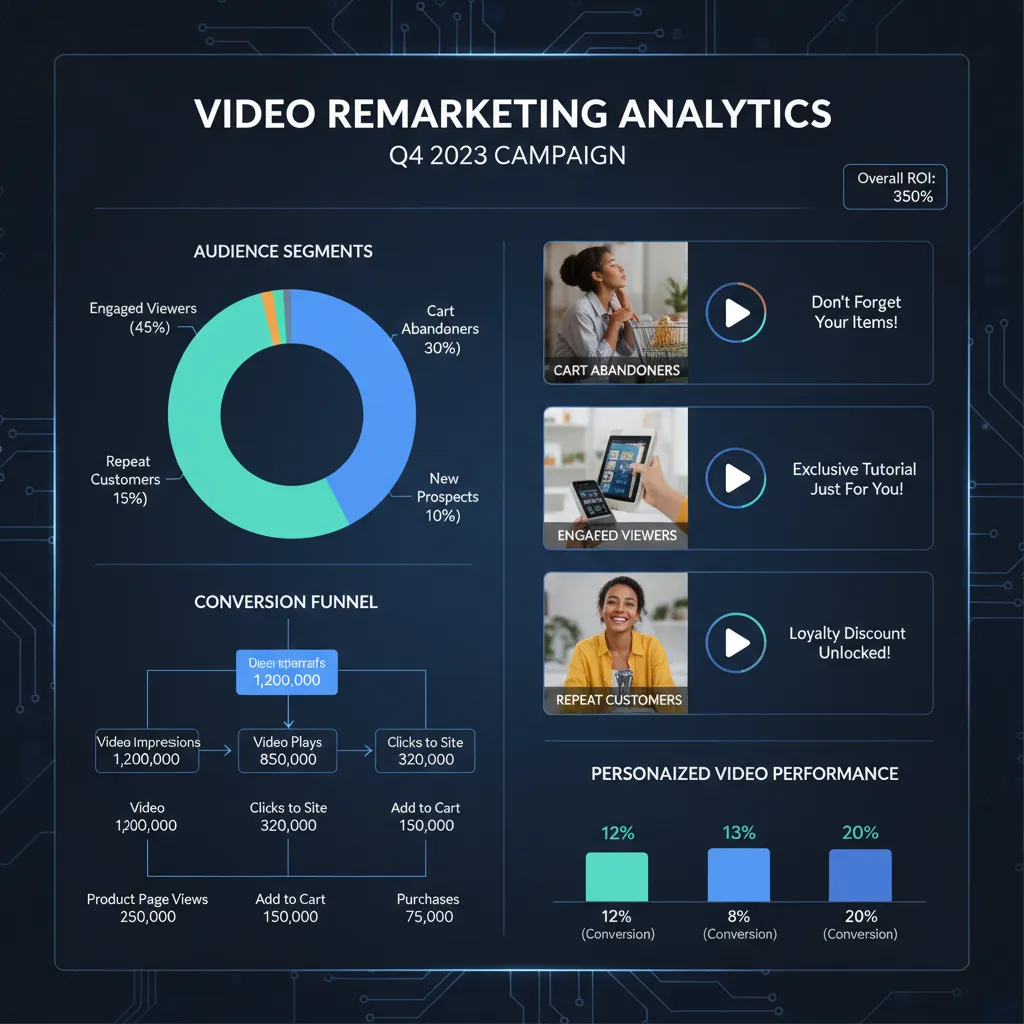
Product Demo Videos: 12 Effective Techniques for Converting Viewers into Customers
Transforming Product Features into Compelling Customer Experiences
Product demo videos represent the crucial bridge between customer curiosity and purchase decision, transforming abstract product features into tangible benefits that viewers can envision in their own lives. At M&M Communications, we've produced demo videos across diverse product categories, understanding that successful demonstrations aren't just about showing product functionality—they're about creating inspirational and magical stories that help potential customers visualize transformation, solve real problems, and experience genuine value before making purchase commitments.
Understanding the Psychology of Product Demonstration
Effective product demo videos address the fundamental gap between product features and customer benefits by showing rather than telling how products solve real problems, enhance experiences, or improve lives in measurable and meaningful ways.
The most successful demo videos recognize that customers don't buy products—they buy better versions of themselves, improved outcomes, or solutions to specific challenges. Demonstration content must bridge this gap by connecting product capabilities with customer aspirations and practical needs.
Professional demo videos also address common customer concerns like usability, quality, value, and compatibility by providing visual proof that builds confidence while reducing purchase anxiety and buyer's remorse potential.
Technique #1: The Problem-Solution Narrative Structure
Establishing Relatable Problems
Begin demo videos by clearly establishing problems that your target audience recognizes and experiences regularly. This problem identification creates immediate relevance and emotional connection that motivates continued viewing and engagement.
Use real customer scenarios, common frustrations, or widespread challenges that resonate authentically with viewer experiences rather than manufactured problems that serve only promotional purposes.
Effective problem establishment should feel natural and genuine rather than dramatic or exaggerated, maintaining credibility while creating motivation for solution exploration.
Demonstrating Clear Solutions
Show how your product addresses established problems through step-by-step demonstration that reveals functionality, ease of use, and measurable outcomes in realistic usage contexts.
Focus on the transformation between problem state and solution state, highlighting not just what the product does, but how it improves the customer's situation, workflow, or quality of life.
Use before-and-after comparisons, time-saving demonstrations, or quality improvement showcases that provide concrete evidence of product value and effectiveness.
Technique #2: Unboxing and First Impression Excellence
Creating Authentic Excitement
Unboxing videos tap into psychological anticipation and discovery excitement that mirrors the customer's own purchase and receipt experience, creating emotional connection and purchase confidence.
Document genuine first reactions, packaging quality, included accessories, and initial setup processes that help customers understand exactly what they'll receive and experience when ordering.
Maintain authentic enthusiasm without appearing overly promotional or scripted, showing real appreciation for product quality, thoughtful packaging, or clever design elements that enhance customer experience.
Addressing Practical Concerns
Use unboxing content to address practical customer concerns about packaging quality, shipping protection, included components, and setup complexity that might influence purchase decisions.
Show actual packaging materials, protective elements, and unboxing ease that demonstrates company attention to customer experience throughout the entire purchase and delivery process.
Technique #3: Step-by-Step Tutorial Integration
Educational Value Delivery
Combine product demonstration with educational content that teaches viewers useful skills, techniques, or knowledge while showcasing product capabilities naturally within learning contexts.
This approach provides value regardless of immediate purchase decisions, building goodwill and expertise positioning that supports long-term customer relationship development.
Structure tutorials that progress logically from basic to advanced usage, allowing viewers to understand both immediate utility and long-term potential value.
Competency Building and Confidence Creation
Help viewers visualize themselves successfully using your product by breaking down complex processes into manageable steps that appear achievable and rewarding.
Address common beginner mistakes, provide troubleshooting tips, and show realistic learning curves that set appropriate expectations while building usage confidence.
Technique #4: Comparative Advantage Demonstration
Direct Competitive Comparison
When appropriate, show direct comparisons between your product and competitive alternatives, focusing on measurable differences in performance, ease of use, durability, or results quality.
Maintain fair and factual comparison approaches that highlight genuine advantages rather than unfair competitive disparagement that might reduce credibility or create legal concerns.
Use side-by-side demonstrations, performance testing, or feature comparison charts that provide clear evidence of product superiority in relevant categories.
Value Proposition Clarification
Demonstrate not just product differences, but value differences that justify pricing, feature selections, or purchasing decisions based on customer priorities and usage requirements.
Show how product advantages translate into customer benefits like time savings, better results, reduced frustration, or improved outcomes that matter to target audiences.
Technique #5: Real-World Application Scenarios
Authentic Usage Contexts
Film product demonstrations in realistic environments and usage situations that match where and how customers will actually use products rather than idealized studio settings.
Include environmental factors, time constraints, and practical considerations that customers face in real-world usage scenarios, demonstrating product performance under actual conditions.
Show multiple usage contexts to demonstrate product versatility and value across different customer needs, lifestyles, or professional requirements.
Customer Journey Integration
Structure demonstrations around typical customer journeys from initial need recognition through product selection, purchase, setup, learning, and ongoing usage satisfaction.
Address questions and concerns that arise at each journey stage, providing information and reassurance that supports decision-making progress and reduces purchase hesitation.
Technique #6: Feature-Benefit Translation Excellence
Connecting Features to Outcomes
Transform technical product features into clear customer benefits by showing how specific capabilities translate into improved experiences, better results, or problem solutions.
Avoid technical jargon or feature lists that don't clearly connect to customer value, instead focusing on outcomes that matter to target audiences.
Use concrete examples, measurable improvements, and visual demonstrations that make abstract benefits tangible and believable.
Lifestyle Integration Demonstration
Show how products integrate naturally into customer lifestyles, workflows, or daily routines rather than requiring significant behavior changes or complicated adaptations.
Demonstrate ease of adoption, compatibility with existing tools or processes, and enhancement of current activities rather than replacement requirements.
Technique #7: Time-Based Performance Documentation
Speed and Efficiency Demonstrations
Use time-lapse, split-screen, or stopwatch demonstrations to show measurable time savings, efficiency improvements, or faster results that products enable.
Compare task completion times with and without your product, showing concrete productivity benefits that justify purchase decisions based on time value calculations.
Document setup time, learning curves, and ongoing usage efficiency to provide comprehensive productivity impact assessment.
Durability and Longevity Evidence
When relevant, show accelerated testing, long-term usage results, or durability demonstrations that address customer concerns about product longevity and value over time.
Include testimonials from long-term users, wear testing results, or maintenance requirements that help customers understand total cost of ownership.
Technique #8: Expert Validation and Professional Endorsement
Industry Expert Demonstrations
Feature industry experts, professional users, or recognized authorities demonstrating your product and explaining why they choose it for professional applications.
Expert endorsements provide credibility and social proof that influences customer confidence while demonstrating product quality and professional acceptance.
Show experts using products in demanding professional contexts that demonstrate capability, reliability, and performance under challenging conditions.
Certification and Standards Compliance
When applicable, demonstrate compliance with industry standards, safety certifications, or professional requirements that matter to target customers.
Show testing processes, certification documentation, or professional approval that validates product quality and suitability for intended applications.
Technique #9: Customer Success Story Integration
Real Customer Experiences
Feature actual customers demonstrating how they use your product and describing specific benefits, improvements, or solutions they've experienced through product adoption.
Real customer stories provide authentic social proof and relatable use cases that help prospects envision their own success with your product.
Include diverse customer types, usage scenarios, and benefit categories to demonstrate broad product appeal and versatility.
Before-and-After Transformations
Document customer situations before and after product adoption, showing measurable improvements, problem resolution, or enhanced capabilities that resulted from product use.
These transformations provide compelling evidence of product value while helping prospects understand potential personal or professional benefits.
Technique #10: Interactive and Responsive Demonstration
Addressing Common Questions
Anticipate and address frequently asked questions, common concerns, or typical objections within demonstration content, reducing customer service burden while improving conversion rates.
Structure demonstrations that progressively address different levels of customer interest and involvement, from basic awareness to detailed evaluation.
Customizable Feature Showcases
When products offer customization options, show various configurations, settings, or personalization possibilities that help customers understand flexibility and adaptation potential.
Demonstrate setup processes, customization options, and personal preference accommodation that addresses diverse customer needs and preferences.
Technique #11: Mobile-Optimized Demonstration Design
Touch and Gesture Integration
For mobile-consumed demo content, optimize for small screens, vertical viewing, and touch interaction patterns that match mobile user behavior and expectations.
Use clear visual elements, readable text, and obvious interactive elements that work effectively across different mobile devices and screen sizes.
Attention-Span Optimization
Structure mobile demo content for shorter attention spans and interrupted viewing patterns, using strong hooks, quick value delivery, and clear progression that maintains engagement.
Include chapter markers, progress indicators, and easy navigation that allows viewers to consume content in segments while maintaining comprehension and interest.
Technique #12: Call-to-Action Integration and Conversion Optimization
Natural CTA Integration
Include clear, compelling calls-to-action that feel natural within demonstration context rather than jarring promotional interruptions that damage viewing experience.
Connect CTAs to specific benefits, features, or outcomes demonstrated in content, creating logical progression from interest to action.
This approach aligns with M&M Communications' philosophy: we don't pressure viewers with aggressive sales tactics. Instead, we create inspirational and magical demonstrations that naturally lead to purchase decisions by emphasizing genuine product value and customer benefit realization.
Multiple Conversion Opportunities
Provide various engagement options beyond immediate purchase: newsletter signup, free trials, detailed specifications, customer service contact, or additional educational content that accommodates different readiness levels.
Enable progressive engagement that builds relationships over time rather than requiring immediate purchase decisions from all viewers.
Production Quality and Technical Considerations
Visual Clarity and Detail Capture
Ensure high-quality video that clearly shows product details, interface elements, and usage techniques without compression artifacts or unclear imagery that might reduce demonstration effectiveness.
Use appropriate lighting, camera angles, and zoom levels that highlight important product features while maintaining overall context and usability understanding.
Audio Quality and Narration Excellence
Provide clear narration, ambient audio, and sound effects that enhance demonstration understanding without overwhelming or distracting from visual content.
Include captions for accessibility while ensuring audio quality supports professional credibility and viewer engagement throughout demonstration duration.
Measuring Demo Video Success
Engagement and Conversion Metrics
Track viewer engagement patterns, completion rates, and conversion actions to understand which demonstration techniques and content elements drive the strongest customer response.
Monitor customer feedback, questions, and concerns that arise after demo viewing to identify areas for improvement or additional demonstration needs.
Sales Impact and Customer Satisfaction
Connect demo video exposure to sales conversion rates, customer satisfaction scores, and return/refund rates to measure long-term demonstration effectiveness.
Use customer interviews and feedback to understand how demonstration content influenced purchase decisions and matched actual product experiences.
Conclusion: Mastering the Art of Product Demonstration
Effective product demo videos combine strategic storytelling, technical excellence, and customer psychology understanding to create compelling content that bridges the gap between interest and purchase while building lasting customer relationships.
At M&M Communications, we understand that exceptional product demonstrations aren't about pushing products through aggressive sales techniques—they're about creating inspirational and magical experiences that help customers understand how products can genuinely improve their lives, solve real problems, and deliver lasting value.
The future belongs to businesses that can create demonstration content combining authentic value delivery with professional presentation quality. Master these demonstration techniques, adapt them for your specific products and audiences, and build demo video capabilities that transform viewer interest into customer satisfaction and lasting business relationships.

